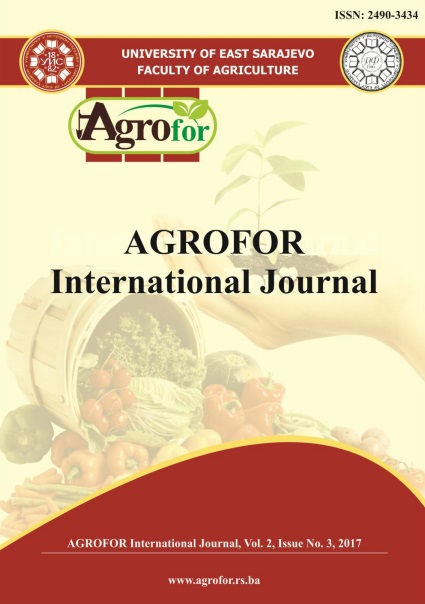USE OF LOCAL COMPOSTED WINERY WASTE FOR LETTUCE PRODUCTION IN LEBANON
DOI:
https://doi.org/10.7251/AGRENG1703099SAbstract
Recently, the Lebanese wine sector has been witnessing a non-precedent growth
producing huge amounts of winery wastes referred to as grape marc. The effect of
using grape marc compost on lettuce (Lactuca sativa L.) production was
investigated in an open-field experiment in Central Bekaa. Seedlings of the
Romaine variety were planted in different substrates: S1: 100% soil or control, S2:
75%soil + 25% grape marc compost, S3: 25%soil + 75% grape marc compost and
S4: 100% grape marc compost. Root growth, leaf growth and leaf characteristics
were compared among the different mixtures. Tests showed that the grape marc
compost contained acceptable values of nitrogen, phosphorus, potassium, organic
matter and a perfect germination index ranking between 0.8 and 1 for the direct and
diluted solutions. Results showed that at early stages of growth, the best results
were obtained from plants grown in the substrate S4. However, at later stages of
growth, grape marc compost with a percentage higher than 50% (S4) in the mixture
induced lower averages of leaf number, length and width of largest leaf and leaf
weight and those higher than 25% (S3 and S4) increased dry matter and total
soluble solids content due to its low water holding capacity causing a water stress
on plants. Root growth was proportional to increased percentages of grape marc
compost. Finally, composted grape marc provided the highest benefit to plants
when added to soil in quantities of 25% by volume allowing the best yield increase
(47%) compared to control.

